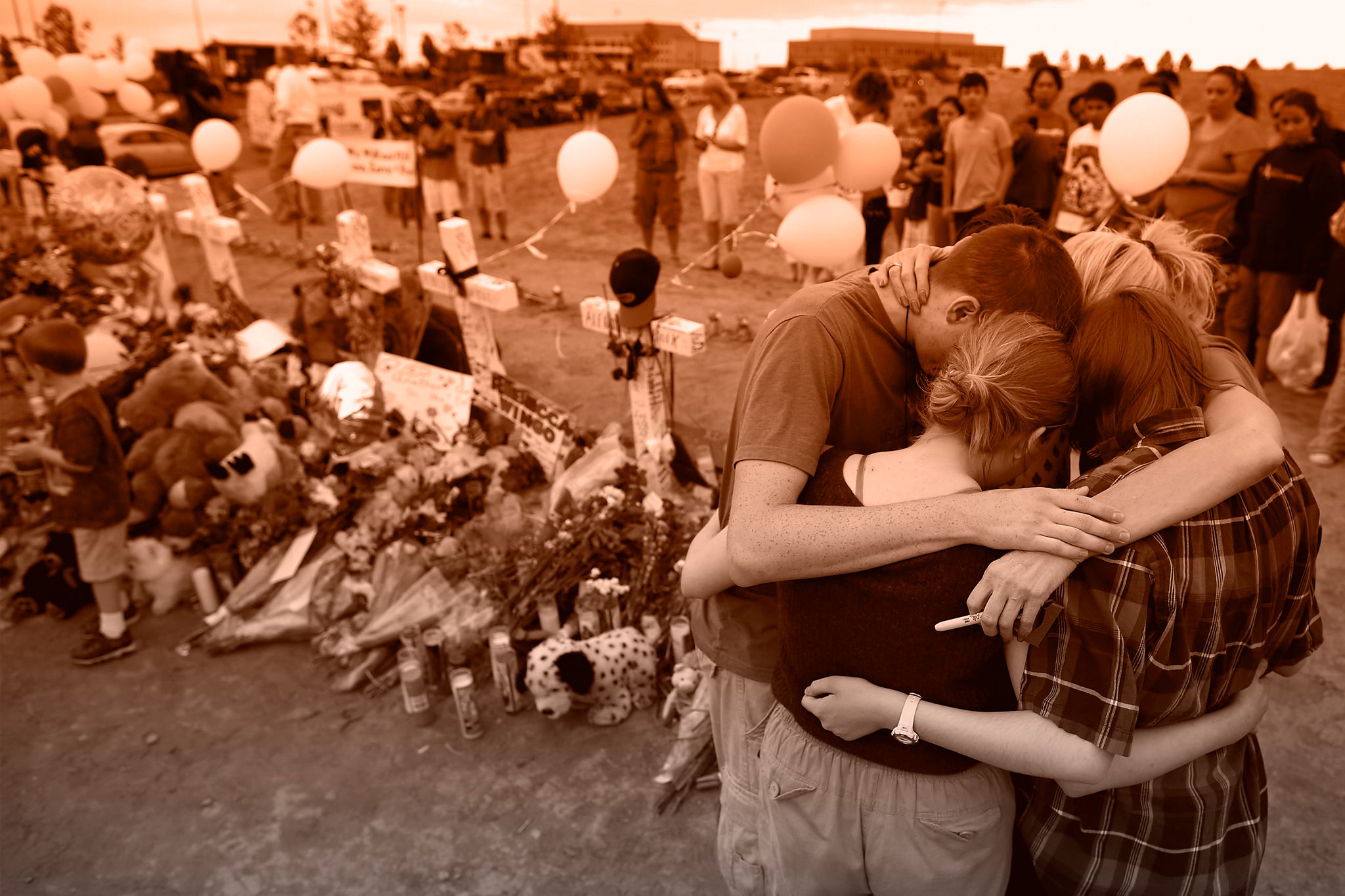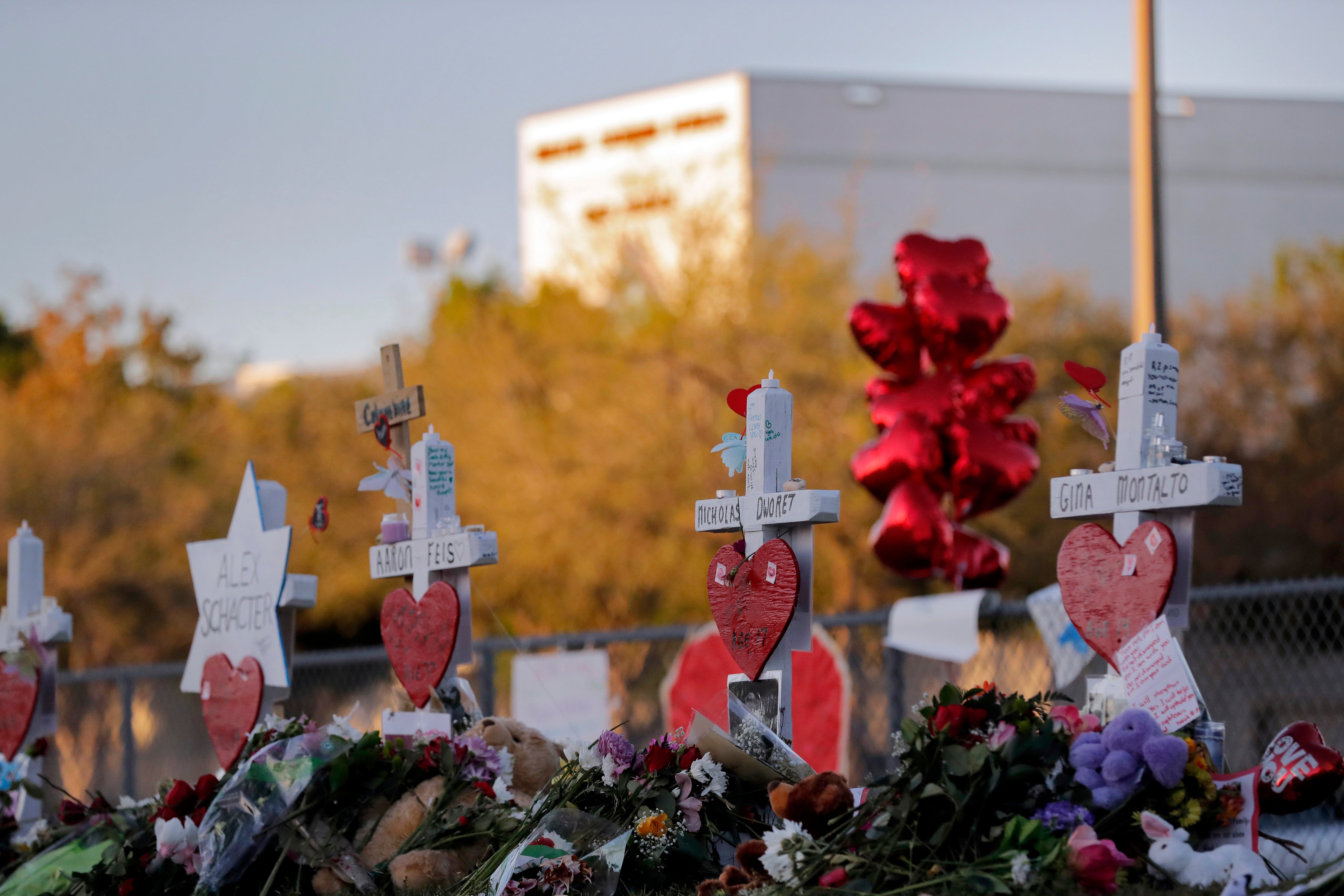Your favorite true-crime podcast probably doesn’t talk about mass shootings. Here’s why
Mass shootings have occupied a strangely remote corner of true-crime media, when other types of violence, such as serial murder, have entire swaths of the industry dedicated to them. Clémence Michallon reports


Your support helps us to tell the story
From reproductive rights to climate change to Big Tech, The Independent is on the ground when the story is developing. Whether it's investigating the financials of Elon Musk's pro-Trump PAC or producing our latest documentary, 'The A Word', which shines a light on the American women fighting for reproductive rights, we know how important it is to parse out the facts from the messaging.
At such a critical moment in US history, we need reporters on the ground. Your donation allows us to keep sending journalists to speak to both sides of the story.
The Independent is trusted by Americans across the entire political spectrum. And unlike many other quality news outlets, we choose not to lock Americans out of our reporting and analysis with paywalls. We believe quality journalism should be available to everyone, paid for by those who can afford it.
Your support makes all the difference.A few years ago, Kat Morris read a book titled A Dark Night in Aurora. It offered a forensic psychiatrist’s look at the man who opened fire on a crowd inside a movie theater in Aurora, Colorado, on 20 July 2012, killing 12 people and wounding 58.
The book’s full title is longer than A Dark Night in Aurora. As is often the case with nonfiction, it includes a second part detailing its contents. That line includes the shooter’s name, which Morris hesitates to say during our call. When talking about mass shootings, she has developed a habit – deeply ingrained by now – of not naming perpetrators. During our conversation, she does so only once, for clarity, before further discussing the book and the impact it had on her.
“It dissected [the perpetrator’s] brain and why he did things and the way he acted, and his friendships and his relationships and his family, and how all that came together,” she says. “And I was fascinated by it.”
Morris had started to develop a taste for podcasts, even picking up work as a freelance researcher for a couple of shows. After reading A Dark Night in Aurora, she looked for a podcast that would enable her to explore the topic further.
“There wasn’t a single one,” she says.
Morris resolved to create it herself. She recruited her best friend, Mari Cole, and a narrator, JT Hosack. Since September 2019, the trio has produced Active Shooter, a rare true-crime podcast with a focus on mass shootings.
Mass shootings have occupied a strangely remote corner of true-crime media. Other types of violence, such as serial murder, have entire swaths of the industry dedicated to them. Programs about disappearances, cults, and scams abound. But Active Shooter is one of very few podcasts dedicated specifically to covering mass shootings, looking at one instance per episode. (Another is Stop the Killing, by former FBI special agent Katherine Schweit.)
Some anthology true-crime podcasts, which look at different cases on a rolling basis, have discussed mass shootings, but those forays remain occasional and temporary.
Rachel Monroe, a contributing writer for the New Yorker whose reporting has often looked at violence and guns, and who devoted a chapter of her book about true-crime Savage Appetites to mass shootings, has noticed that they seem to “occupy a different narrative space” within true-crime.
“If you think about classic true-crime – the serial killer or something like that – so much of it is grounded in this idea of the narrative, the whodunnit, the piecing together of the clues, something unfolding over time,” she says.
A mass shooting, in contrast, is “this explosion of violence”, she says. When questions do arise, they are often straightforward (for example: “How did they get the gun?”), and their answers can be brutally simple. “Often, it’s like, ‘They bought it at the gun store,’” Monroe says.
Since 2019, Active Shooter has accrued around a million downloads, according to Morris. Those aren’t chart-topping numbers, but the podcast’s audience has grown notably over the course of its 127 episodes.
One early ethical discussion was about how to publicly discuss mass shootings, and the team made a clear decision. The names of the perpetrators are never mentioned on Active Shooter. The team uses pseudonyms instead. Episodes are titled after the location of the shooting they examine (“Robb Elementary School, Uvalde, Texas”, “Oxford High School, Oxford, Michigan”, “Planned Parenthood, Colorado Springs, Colorado”).
Each episode also mentions a pledge started by No Notoriety, a campaign that promotes best practices for journalists and content creators whose work touches on mass shootings. No Notoriety was co-founded by Tom and Caren Teves, whose son Alex died in the Aurora shooting at the age of 24, while shielding his girlfriend from gunfire.
aAfter the shooting, Tom Teves was struck by how much of the media coverage of the shooting centered the perpetrator. “We turned on the news and all we heard about was the murderer, the murderer, the murderer,” he tells The Independent. “Nothing about the victims.”
It was also evident to him, looking at other mass shootings, that the desire for attention, or for fame, was present on the perpetrators’ side. “They want their 15 minutes of fame or whatever,” he says. “And time and time again, the media gives it to them.”
No Notoriety has published a media protocol that they recommend following to cover mass shootings without feeding into the dynamics of infamy. The campaign, for example, advises mentioning the name of the perpetrator once at most, “as a reference point” and “never in the headlines”. They ask for “no photo [of the perpetrator] above the fold”, and to refrain from publishing “any self-serving material” such as photos, videos, or manifestos. (Those manifestos, Monroe says, typically amount to “this mundane, kind of paranoid, grandiose soup that is in no way illuminating or revealing.”)

When Morris she created Active Shooter, she “knew right away that we were not going to give [perpetrators] any notoriety”. At first, she thought mentioning the shooters’ names once at the beginning of each episode would be the way to go – but she eventually decided to go one step further.
“I said, ‘No,you know what? I don’t even want to give them that,” she says, “At first we were going to refer to them just as ‘the shooter’, but it got to be a lot. So we came up with doing a pseudonym [instead].”
It’s hard to talk about mass shootings without talking about gun legislation – what a lot of people would call “politics”. That aspect traditionally fits into the mainstream media coverage, but it’s usually limited to news stories. The topic can be harder to handle for independent podcasters or content creators, who might feel that they risk alienating their audience if they take a position.
“One of the things that’s always struck me about true-crime as a genre is that for a long time and in many cases, it has tried to keep itself separate from politics,” Monroe says. That’s certainly beginning to change, and people are handling true-crime in different ways than they used to. But I think it was the idea.”
The idea of writing about violence without writing about politics, however, makes less and less sense to her.
“I think increasingly, the idea that a shooter is politically motivated is at the forefront when there is a mass shooting,” she says. “If it’s not a disaffected teenager, then it’s like, ‘What side were they on? What were their individual demographics and who were they like trying to kill?’”
When Morris started Active Shooter, she knew she didn’t want the show to be “about politics”, “because I hate that crap”. But that doesn’t mean the show steers entirely clear of mentions of policy. “We’ll talk about how this could have been prevented, especially with new red-flag laws coming into play,” she says. If a case wasn’t followed-up on, or if warning signs were overlooked before the perpetrator obtained a firearm, “we bring those up,” she says.
Monroe and Teves both believe the coverage of mass shootings has improved over the years – though Teves says it’s “still not where it needs to be.”
“I thought it would take six months to do this,” he says. “I never thought it would take 12 years – and it’s still not done.”
As a reference point, Monroe uses the 1999 Columbine High School massacre, which is a focus of the chapter in her book that looks at mass shootings. In 2006, diaries kept by the two perpetrators were published and widely discussed, adding to a pre-existing library of materials, including photos and videos. Those materials contribute to an unfortunate “mystique” around the two shooters, Monroe says.
“We just know so much about those two boys and what was going on in their heads and how they felt about prom and their bad poetry and all of that,” she says. “There’s content to project onto and tell stories about. That’s why they loom so large.”
Such stories can feel “like a trap” for journalists and storytellers, Monroe says – and best practices exist precisely to avoid that effect.
“I think we as the media have learned to be careful about giving that kind of attention,” she says. “Negative attention is still attention, right? Anybody who’s hung out with a toddler knows that.”


